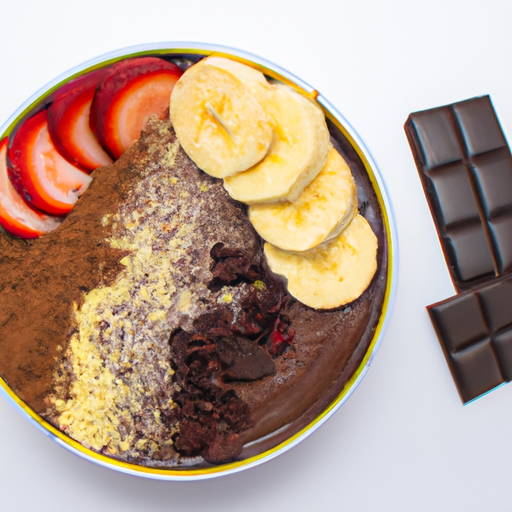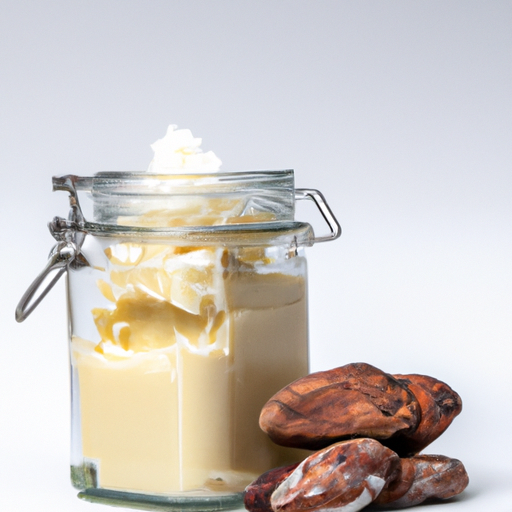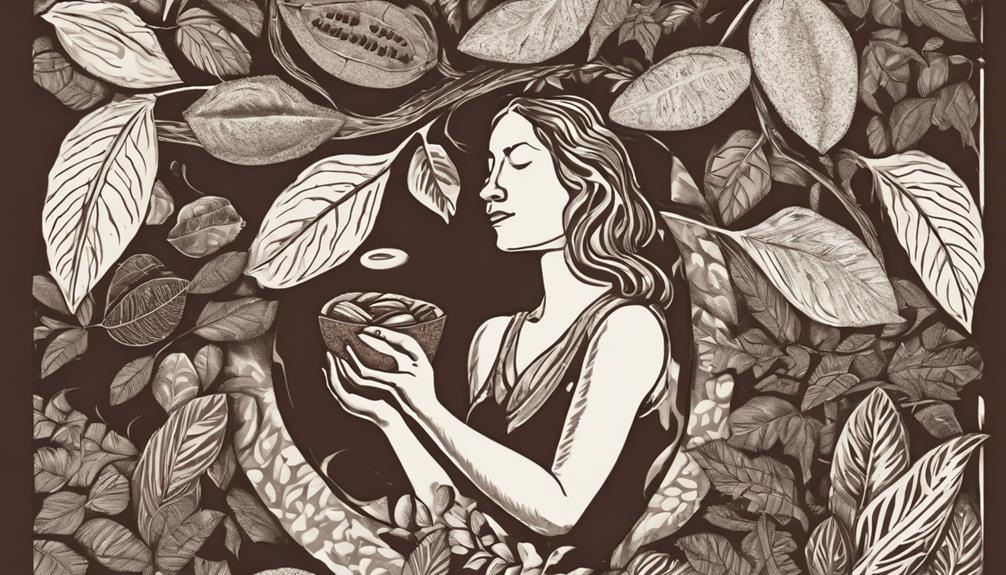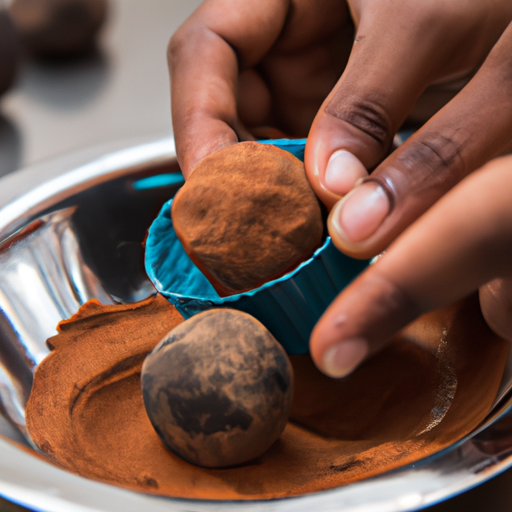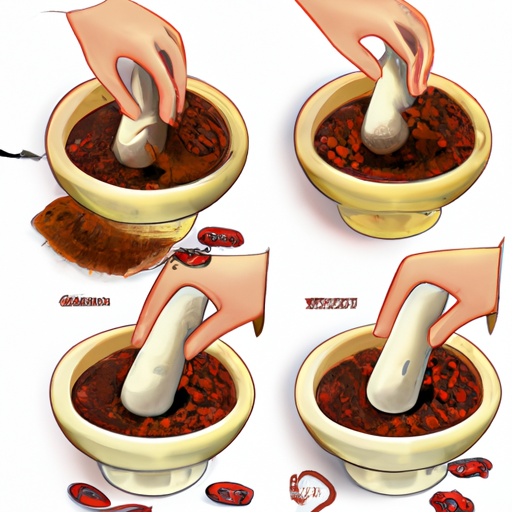I understand that you may be wondering: ‘Raw cacao powder? How do I consume that?’ Rest assured, adding raw cacao powder to your diet is not only tasty but also extremely good for your health. As a person who enjoys trying out new ingredients in cooking, I have found many ways to savor this nutrient-rich superfood.
In this article, I’ll share with you the many benefits of raw cacao powder and provide practical tips on how to incorporate it into your daily routine. Whether you want to add it to your morning smoothie, bake with it, or even create energy balls and bars, there’s a way for everyone to enjoy the rich, chocolatey flavor of raw cacao powder.
So, if you’re ready to take your culinary adventures to the next level and reap the rewards of this superfood, join me as we explore the world of raw cacao powder and discover new ways to indulge in its goodness.
Key Takeaways
- Raw cacao powder can be used to add bitterness and complexity to dishes.
- It can be sprinkled over roasted vegetables or used as a marinade seasoning for meats.
- Adding a small amount of raw cacao powder can enhance the richness in chili or mole sauces.
- Raw cacao powder can be incorporated into savory dishes like salad dressings or spice rubs for seafood.
Benefits of Raw Cacao Powder
Raw cacao powder has numerous benefits that make it a valuable addition to your diet. Firstly, it is loaded with antioxidants, which protect your body from free radicals and reduce the risk of chronic diseases. Secondly, it is a rich source of essential nutrients like magnesium, iron, and fiber, all of which are crucial for maintaining good health. Moreover, incorporating raw cacao powder into your diet can enhance your mood and increase your energy levels. It is incredibly versatile and can be used in various recipes, such as homemade chocolate bars, brownies, or as a topping for oatmeal or yogurt. You can also add it to smoothies and shakes to enjoy its health benefits while indulging in a delicious and nutritious beverage.
Adding Raw Cacao Powder to Smoothies and Shakes
Blend your favorite fruits, a handful of greens, and a spoonful of this magical ingredient to create a smoothie that tastes like a rich and decadent dessert, melting in your mouth like a velvety symphony of flavors.
Adding raw cacao powder to smoothies and shakes not only enhances the taste but also provides numerous health benefits. Here are five reasons why you should incorporate this superfood into your daily routine:
- Boosts mood and promotes feelings of happiness
- Increases energy levels and endurance
- Supports heart health and reduces the risk of cardiovascular diseases
- Enhances brain function and improves cognitive abilities
- Provides a natural source of antioxidants to fight free radicals
Additionally, you can sprinkle cacao powder into your coffee for a delicious mocha twist or use it in homemade protein bars for an extra dose of protein and chocolatey goodness.
Now, let’s move on to the next section and explore the wonders of baking with raw cacao powder.
Baking with Raw Cacao Powder
Indulge yourself in the rich and decadent world of baking with raw cacao powder. Discover the irresistible allure of incorporating this magical ingredient into your favorite recipes.
Raw cacao powder can be a great substitute for regular cocoa powder in baking. It adds a deeper and more intense chocolate flavor to your creations. You can use it in a variety of baked goods such as cookies, cakes, and brownies.
But it’s not just about the taste. Raw cacao powder also offers numerous health benefits. Packed with antioxidants, magnesium, and iron, it can support cardiovascular health and boost your mood.
So go ahead and swap out your regular cocoa powder with raw cacao powder in your next baking adventure. You won’t be disappointed!
And after baking up a storm, why not treat yourself to a warm and comforting cup of homemade raw cacao hot chocolate? It’s the perfect way to end a day of indulgence in the world of raw cacao baking.
Making Raw Cacao Hot Chocolate
To make a delicious cup of hot chocolate, simply combine the rich and intense flavor of raw cacao with warm milk and a touch of sweetener, resulting in a creamy and indulgent treat that will surely satisfy your chocolate cravings. Did you know that hot chocolate is a favorite among many, with an estimated 2 billion cups consumed worldwide each year?
When making raw cacao hot chocolate, it’s important to use high-quality raw cacao powder for the best flavor. You can also experiment with adding spices like cinnamon or a dash of vanilla extract to enhance the taste. To make it even more luxurious, top it off with a dollop of whipped cream or a sprinkle of raw cacao nibs for added texture.
Aside from hot chocolate, raw cacao powder can be used in various other ways. You can incorporate it into your morning coffee for a mocha twist or use it to make delicious raw cacao truffles. Additionally, raw cacao powder can be used as an ingredient to create raw cacao energy balls and bars, providing a healthy and energizing snack.
Now, let’s move on to creating raw cacao energy balls and bars, which are perfect for a quick boost of energy throughout the day.
Creating Raw Cacao Energy Balls and Bars
Enhance your energy levels throughout the day by creating delectable energy balls and bars using the exquisite flavors of raw cacao.
Raw cacao powder is a nutritious and flavorful addition to protein bars, providing a natural boost of energy. Its rich chocolatey taste adds a delightful touch to homemade granola, making it a perfect on-the-go snack.
Incorporating raw cacao powder into these treats not only satisfies your sweet tooth but also provides essential nutrients like antioxidants and minerals.
These energy balls and bars are easy to make, requiring simple ingredients like dates, nuts, and seeds, mixed with raw cacao powder for a burst of flavor. They can be prepared in advance and enjoyed throughout the week, providing a convenient and healthy option for busy individuals.
Now, let’s dive into the next section and explore how to incorporate raw cacao powder into oatmeal or yogurt.
Incorporating Raw Cacao Powder into Oatmeal or Yogurt
Spice up your morning routine by sprinkling some of that heavenly raw cacao goodness onto your warm bowl of oatmeal or creamy yogurt. Here are a few ways to incorporate raw cacao powder into your breakfast:
-
Mix it into your oatmeal: Add a tablespoon of raw cacao powder to your cooked oatmeal for a rich and chocolatey flavor. It pairs perfectly with toppings like sliced bananas or chopped nuts.
-
Blend it into your yogurt smoothie: Add a scoop of raw cacao powder to your favorite yogurt smoothie recipe for a nutritious and indulgent treat. It adds a delicious chocolate taste and a boost of antioxidants.
-
Make raw cacao protein pancakes: Add a tablespoon of raw cacao powder to your protein pancake batter for a decadent twist. It adds depth of flavor and makes your pancakes extra satisfying.
-
Stir it into your coffee: Boost your morning caffeine fix by adding a teaspoon of raw cacao powder to your coffee. It adds a hint of chocolatey goodness and can be a healthier alternative to flavored syrups.
Now, let’s move on to exploring how raw cacao powder can be used in desserts and treats.
Raw Cacao Powder in Desserts and Treats
Indulge yourself with the velvety richness of raw cacao powder as it transforms your favorite desserts and treats into decadent masterpieces.
Whether you’re making ice cream or coffee drinks, raw cacao powder adds a depth of flavor that will satisfy your cravings. When making homemade ice cream, simply mix in a couple of tablespoons of raw cacao powder to the base to create a chocolatey delight. The intense flavor and smooth texture of the cacao powder will elevate your ice cream to a whole new level.
Similarly, adding a teaspoon or two of raw cacao powder to your coffee drinks will give them a rich and indulgent taste. The bitterness of the cacao perfectly complements the boldness of the coffee, creating a truly luxurious experience.
Now, let’s explore how raw cacao powder can enhance savory dishes.
Raw Cacao Powder in Savory Dishes
Now that we’ve explored the delicious ways to use raw cacao powder in desserts and treats, let’s dive into its usage in savory dishes.
Raw cacao powder can add a unique depth of flavor to your savory creations, bringing a hint of bitterness and complexity.
One serving suggestion is to sprinkle a pinch of raw cacao powder over roasted vegetables or use it as a seasoning in marinades for meats.
You can also experiment with adding a small amount of cacao powder to chili or mole sauces to enhance their richness.
Beyond these traditional uses, there are alternative ways to incorporate raw cacao powder into your savory dishes, such as making a cacao-infused salad dressing or adding it to a spice rub for grilled seafood.
It’s all about exploring and finding what works best for your taste buds.
Speaking of which, let’s move on to some tips for storing and finding quality raw cacao powder.
Tips for Storing and Finding Quality Raw Cacao Powder
For optimal flavor and quality, it’s essential to store and source high-grade raw cacao powder. Here are a few tips to keep in mind:
-
Store it in an airtight container. This will help prevent moisture and air from affecting the flavor and texture of the powder.
-
Keep it in a cool, dark place. Exposure to heat and light can cause the cacao powder to lose its flavor and nutritional value.
Finding quality cacao powder is also important. Consider the following:
-
Look for organic and fair-trade certifications. These certifications ensure that the cacao powder is produced sustainably and without harmful chemicals.
-
Read reviews and check for reputable brands. Doing some research and reading reviews can help you find trusted brands that consistently provide high-quality cacao powder.
By following these tips, you can ensure that you’re storing and using the best raw cacao powder for all your culinary creations.
Frequently Asked Questions
Can raw cacao powder be used as a substitute for cocoa powder in recipes?
Yes, raw cacao powder can be used as a substitute for cocoa powder in recipes. It has similar flavors, but raw cacao powder is less processed and retains more nutrients, making it a healthier choice.
Is there a recommended daily serving size for raw cacao powder?
The recommended daily intake of raw cacao powder varies, but generally, 1-2 tablespoons is a good starting point. It’s important to note that raw cacao powder is high in antioxidants and can provide various health benefits when consumed in moderation.
Can raw cacao powder be used for making homemade chocolate?
Raw cacao powder can be used to make delicious homemade chocolate. Its benefits include being rich in antioxidants and providing a natural energy boost. To make it from scratch, simply grind raw cacao beans into a fine powder.
Are there any potential side effects or allergic reactions to consuming raw cacao powder?
There are potential health benefits to consuming raw cacao powder, but some people may experience side effects or allergic reactions. It is important to store raw cacao powder in a cool, dry place to maintain its quality.
Can raw cacao powder be used as a natural remedy for certain health conditions?
Sure, raw cacao powder is a magical cure-all! It’s definitely the answer to all your health problems, including weight loss and heart health. Just sprinkle it on everything and watch the pounds melt away!
Can Eating Raw Cacao Powder Lead to Feeling High?
Some people claim that getting high raw cacao can lead to an elevated mood and increased energy levels. The natural compounds found in raw cacao, such as theobromine and phenylethylamine, are said to have mood-enhancing effects. However, scientific evidence supporting these claims is limited, and consuming raw cacao in excess may have negative health consequences.
Conclusion
In conclusion, incorporating raw cacao powder into your daily routine offers a multitude of benefits. Whether you add it to your morning smoothie or bake it into delicious treats, the possibilities are endless.
Not only does raw cacao powder provide a rich and indulgent flavor, but it also contains powerful antioxidants and nutrients that support overall well-being.
So why not indulge in the goodness of raw cacao powder and elevate your meals with its delicious and nutritious properties? Start enjoying the benefits today!

